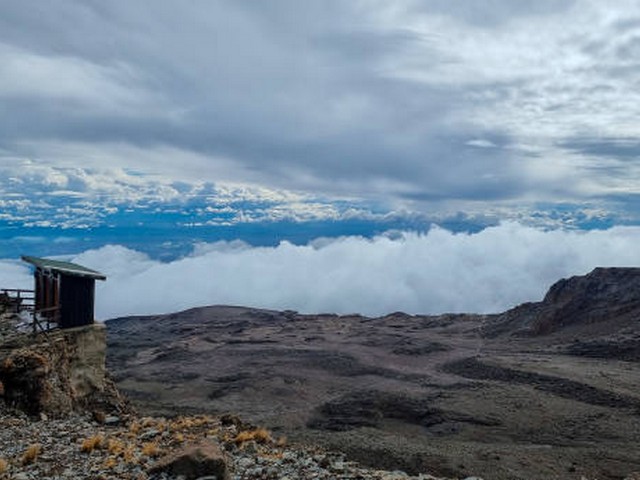What to Pack for Kilimanjaro Trek: Your Ultimate Guide
Standing as a beacon of wonder in Tanzania, Mount Kilimanjaro is not just Africa’s tallest peak but also a symbol of adventure that calls to trekkers and adventurers from around the globe. A successful climb to its summit, Uhuru Peak, requires not only determination and strength but also meticulous preparation, especially when it comes to packing. Here at the Kilimanjaro Centre for Trekking and Ecotourism (KCTE), we understand that knowing exactly what to bring can make a world of difference in the enjoyment and success of your climb. So, let’s embark on a journey through the essentials of packing for your Kilimanjaro adventure!
Essential Clothing: Dressing for Success at High Altitudes
Base Layers
The key to staying comfortable on Kilimanjaro is layering. Start with moisture-wicking base layers. These are crucial as they keep you dry by pulling sweat away from your skin, helping to maintain your body temperature. For both tops and bottoms, choose materials like merino wool or synthetic fibers.
Insulation Layers
As you ascend, temperatures can drop significantly. Pack a good quality fleece or down jacket that offers substantial warmth but is also lightweight and easy to compress into your backpack.
Outer Layers
Your outer layers should protect you from wind and rain. A durable, waterproof, and breathable jacket and pants are a must. These will shield you from the elements without trapping moisture inside.
Head and Hand Gear
Don’t forget a warm hat and, potentially, a balaclava to protect your face against cold wind. A good pair of waterproof gloves is also essential, preferably with a fleece lining for extra warmth.
Footwear
Proper hiking boots are non-negotiable. Choose a pair that is well broken-in to avoid blisters. They should be waterproof and offer good ankle support. Pair these with moisture-wicking socks and consider thermal options for the colder, higher elevations.
Gear and Equipment: Every Trekker’s Necessities
Backpack
A sturdy, well-fitting backpack (35-40 liters capacity) is crucial. Make sure it has comfortable straps and a waist belt to distribute the load properly. A rain cover for your backpack is also advisable.
Sleeping Bag
Nights on Kilimanjaro are chilly. A sleeping bag rated for at least -10 degrees Celsius will ensure you stay warm. Opt for a lightweight, compressible model that won’t add too much bulk.
Trekking Poles
Trekking poles can significantly ease the strain on your knees, especially during descents. They can also help with balance on uneven terrain.
Headlamp
A reliable headlamp and extra batteries are essential, especially for the summit night when you’ll be trekking in the dark.
Health and Hygiene Essentials
Hydration
Staying hydrated is crucial. Pack a reusable water bottle or a hydration bladder with at least a 2-liter capacity. Remember, you’ll need to drink plenty of water to combat altitude sickness.
Sun Protection
The sun at high altitudes can be harsh. Bring a high-SPF sunscreen, lip balm with sunblock, and sunglasses with UV protection.
First Aid and Medication
Prepare a basic first aid kit with essentials like bandages, antiseptics, and blister treatments. Include any personal medications, and consider asking your doctor about medication for altitude sickness.
Toiletries
Keep your toiletry bag light: Include toothbrush, toothpaste, biodegradable soap, and toilet paper. Wet wipes are a great addition for refreshing yourself after a long day of trekking.
Nutritional Needs: Fueling Your Climb
While KCTE provides meals during your climb, having some personal snack favorites can help keep your energy up. Pack lightweight, high-energy snacks like nuts, chocolate, and energy bars.
Miscellaneous Must-Haves
Camera
Don’t forget a camera or a phone with a good camera to capture the breathtaking views. Make sure you have extra batteries or a power bank.
Ziplock Bags
These are invaluable for keeping your electronics and important documents dry and safe from dust.
Light Book or Journal
These can be great for downtime in the evenings when you want to unwind or jot down your experiences.
Why Book Your Kilimanjaro Climb with KCTE?
At Kilimanjaro Centre for Trekking and Ecotourism (KCTE), we pride ourselves on providing expert-guided climbs that are tailored to maximize your chances of reaching the summit. Our experienced guides, comprehensive climb support, and attention to safety are unparalleled. Let us make your Kilimanjaro dream a reality while ensuring a memorable and safe adventure.
Packing Smart, Climbing Smart
Packing for Kilimanjaro is a balance between being prepared and keeping your load manageable. Remember, every item you pack will be carried up the mountain. Choose wisely, pack efficiently, and gear up for one of the most thrilling experiences of your life.
FAQ: Packing for Kilimanjaro
What is the most common mistake people make when packing for Kilimanjaro?
Overpacking is a common issue. It’s important to pack essential items but be mindful of weight and space.
Can I rent equipment locally?
Yes, KCTE offers rental options for major gear like sleeping bags and trekking poles. It’s a convenient option to consider.
How do I manage packing for different climate zones?
Layering is your best strategy. As you ascend, temperatures vary, so be ready to add or shed layers as needed.
What should I do the day before the climb?
Review your pack, ensure you have all essentials, and try to relax. A calm mind and a good night’s sleep are just as important as a well-packed bag.
Ready to tackle Kilimanjaro? Remember, the journey to the roof of Africa begins with thoughtful preparation. Reach out to Kilimanjaro Centre for Trekking and Ecotourism (KCTE) to book your climb, and let us guide you to the summit with the expertise that only comes from years of experience. See you at the top!




